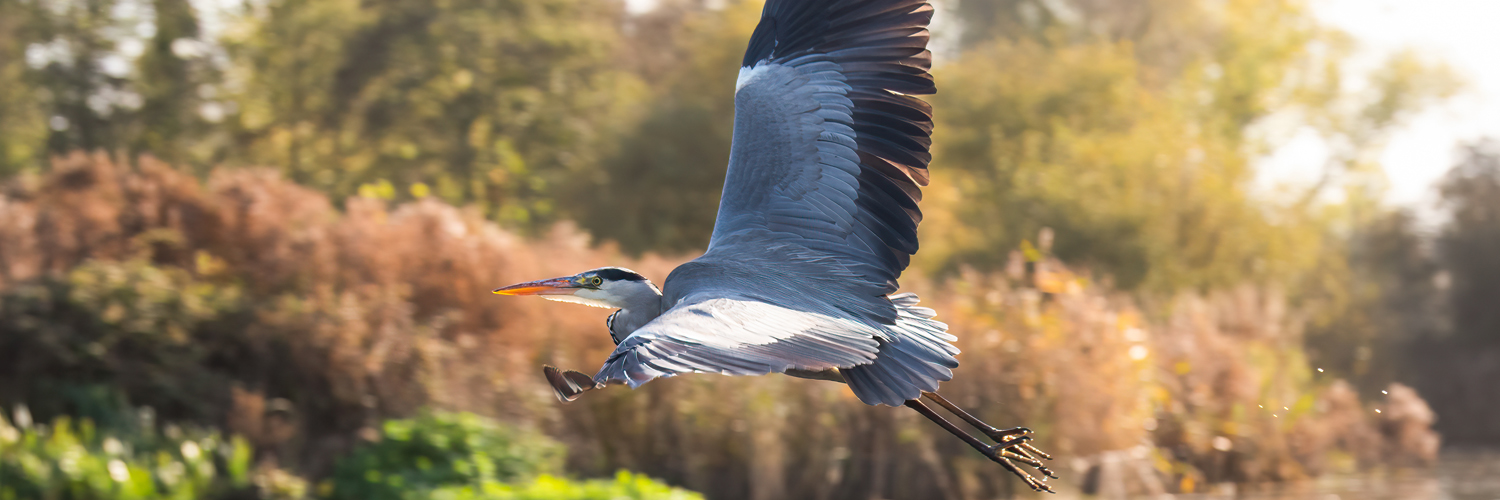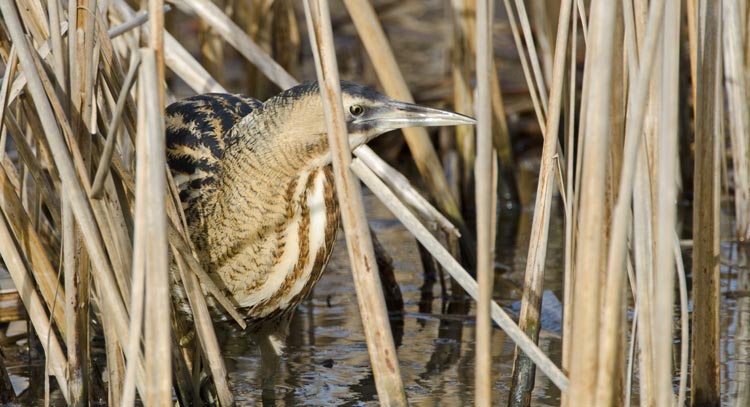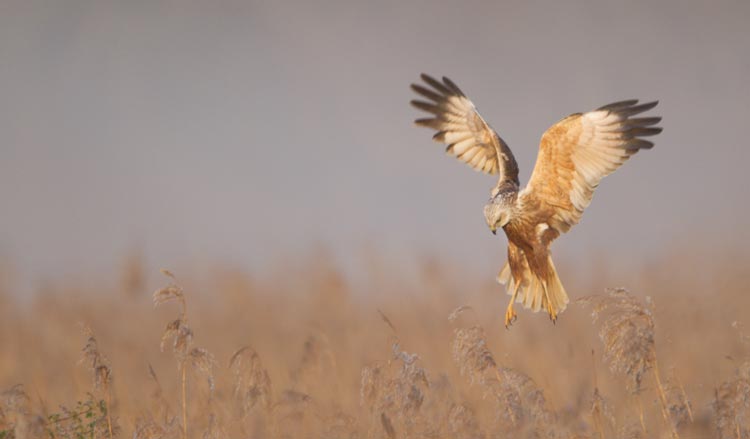

The Broads National Park is like no other. Across land, sea and sky, there is so much wildlife to discover.

The bittern (or butterbump as it’s known in Norfolk) has a booming mating call that can be heard two kilometres away. It’s one of the rarest breeding birds in the UK.
Well known for its pleasure boat waterways, the Broads offers the opportunity to take in the biodiversity of the reedbeds, the tiny, rare plants of the fens and the wide, flat expanses of the grazing marshes from the gentle tranquillity of the river
Get a different view of the coast from the sea. Throughout the year, there are boat trips to beaches popular with seals and it’s the best way to see rare porpoise.
For those who enjoy a faster pace, there’s the chance to take to the water on a sailboard or a kayak. Look up and you might admire the grand wingspan of a crane or a heron overhead, or listen out for the rustle of an otter close to the shore.
The area is said to be one of the best bird spotting locations in the country. Head to one of the many viewing platforms just before sunset to spot rare wader birds overwintering in the shallows, or flying in on a sea breeze.
Or for those who like to strike out and go their own way, head on foot through one of the nature reserves, or take a bike ride along one of the many paths.
Whether you’re a casual observer, a keen fisher, or a wildlife enthusiast, let the beauty and diversity of the Broad’s wildlife fascinate you.

What makes the Broads unique?
It’s an impressive area. Home to a variety of rare environments, it’s impossible to overstate the value of the Broads as one of Britain’s most important habitats.
Rivers meander past fenlands fed on alkaline water from chalk beds below, only to give way to wide, open reaches rich with wading wildlife. Semi-wet woodlands sit next to grazing marshes, home to dense flora and a plethora of species.
It's no surprise that the Broads is home to a number of rare species. However, due to declines in population as a result of habitat degradation, invasive species or other reasons, it is unfortunately also home to some of the most endangered species in the UK:
Water voles
The Water vole has seen a sharp population decrease in recent years and is sadly now the UK's fastest declining mammal. This may be in part due to habitat loss, but predation by the invasive American Mink is likely a key reason behind their decline. Nonetheless, the Broads is still a national stronghold for this fantastic mammal so keep an eye out around the waterways for a large brown vole and you might be in luck.
For more information on how you can contribute to saving the Water vole visit the Water Vole Organisation's website.
Cuckoos
Despite their distinctive call and unmistakable plumage being familiar across the UK, the once-common cuckoo is now one of the most endangered birds in the country. Although they are an IUCN priority red list species for conservation, the exact cause of their staggering 50% population decline is not fully understood. They are a summer visitor here in East Anglia and can be spotted in a range of different habitats including the marshes and fenland of the Broads National Park.
Visit the British Trust for Ornithology website to support their cuckoo research.
European eel
The European eel is a species of fish that was once widely caught in North Norfolk and The Broads, yet is now on the IUCN Red list of critically threatened species. These unique creatures are born in the Sargasso sea in the North Atlantic Ocean before making an amazing journey to the UK and Europe where they mature (on that note, some eels can live to be over 100 years old). Because of their past popularity as a food source, over-fishing is cited as a reason for their decline, however climate change and pollution have also likely had a negative effect on their population.
Fortunately, eel numbers have been increasing steadily in recent years according to the IUCN, so keep an eye out for these slithery specimens in the rivers and broads.
There is no off-season on the Broads. Local visitors and those from further afield are drawn to the area all year round, and it’s easy to understand why. This is the perfect place for a mini safari, right on your doorstep.
The adder, Britain’s only venomous snake makes its home in the heathland and dunes near Horsey. And if you’re lucky, you’ll catch sight of one, as the males emerge from hibernation a month earlier than the females. This is also the best time of year to spot the rare and elusive harbour porpoise off the coast. Late May sees an abundance of invertebrate life, like damselflies, flying close the surface of the water. While the inward migration of huge groups of swallows are best seen from conservation centres like the one at Ranworth Broad.

Nocturnal, shy and extinct across much of Europe, the best time to catch a glimpse of Britain’s largest native crayfish, The White Clawed, is from July to September in the river Wensum. Now only seen in the Broads, Britain’s largest butterfly, the Swallowtail, emerges in late May. One of the best ways to see it is very early on a bright, summer’s morning at Hickling Broad. The impressive Marsh Harrier is another of the Broad’s conservation success stories. Once extinct in Britain, it now nests throughout the area. Mid to late summer also brings a carpet of Purple Sea Lavender blooms across the marsh.
Said to be the best time for for watching seabirds, rare warblers and red-flanked bluetails come inland for the winter, it’s also fungi season, so there’s an array of mushrooms and toadstools making their home on old wood and loamy soil. From the attractive but poisonous red colouring of the Fly Agaric to the edible Chicken-of-the-Woods. The highlight of the year around the coast at Horsey is the start of grey seal pupping season – from October to early February, mothers come ashore, have their babies and nurse them, right on the beach.
Chilly North Sea winds don’t deter wildlife watchers during the coldest months of the year. The cacophony of waterfowl overwintering on the salt marshes draws hardy spotters with binoculars.
The Norfolk coast is the best place to see a rarer, dark-bellied variety of the vocal Brent Goose. It’s also a good time of year to spot deer, especially the smaller, non-native, Chinese Water Deer which favours a wet, marshy environment.
Read more about what to see and bring and where to spot wildlife
Check out our wildlife things to do listings and countryside and wildlife events
Read more about what to see and bring for wildlife watching